Ultra-Small-Angle X-ray Scattering (USAXS) Facility
Contacts: e-mail, instrument scientist: Jan Ilavsky, 630-252-0866 and Ivan Kuzmenko, 630-252-0327. Before applying for beamtime, contact instrument staff and talk with them!
Our instrument consists of:
Advanced-design Bonse-Hart USAXS camera (primary device)
fixed length SAXS (500mm) camera (secondary device)
fixed length WAXS (300mm) camera (secondary device)
The USAXS/SAXS/WAXS instrument offers world-unique capabilities to wide range of communities in physics, chemistry, materials science, polymers, food science, biology, and many others. Data are measured over unprecedented range of about 5 decades in scatterer sizes - from approximately 2 microns to less than 1 Angstrom - with intensity range of up to 11 decades, and in about 3 minutes data collection time. This is achieved by combination of Bonse-Hart design USAXS with pinhole SAXS and WAXS devises. Data are collected sequentially using one or more of these devices. See some example data in graphics below on this page. Typical parameters are below:
- Standard configuration (Si 220 crystals, slit smeared USAXS)
- Energy range .......... 10 - 24 keV, typical 21keV
- Q range .................. 0.0001 to 6 [1/A] (max depends on energy used)
- Collection time ........ 2 - 5 minutes
- Intensity range ........ up to 12 decades (depends on sample), desmeared
- Q resolution ............ ~ 0.00008 [1/A] in the USAXS range (up to ~0.1 [1/A])
- SAXS ....................... Q range ~ 0.03 to 1.3 [1/A]
- WAXS ...................... d spacing range approximately 6A to 0.8 A, depending on energy
- High resolution configuration (Si 440 crystals, slit smeared USAXS) - requires significant setup and alignment time, special request only
- Energy .................... 12 - 18 keV, 18keV typical
- Q range .................. 0.00003 to 6 [1/A] (max depends on energy used)
- Collection time ........ 4 - 6 minutes
- Intensity range ........ up to 12 decades (depends on sample), desmeared
- Q resolution ............ ~ 0.00003 [1/A] in the USAXS range (up to ~0.1 [1/A])
- SAXS ....................... Q range ~0.03 - 1.3 [1/A]
- WAXS ...................... d spacing range approximately 6A to 0.8 A, depending on energy
- 2D collimated USAXS (Si 220 crystals) - requires significant setup and alignment time, special request only
- Energy .................... 12 - 21 keV
- Q range .................. 0.0001 to 0.1 [1/A]
- Collection time ........ 4 - 6 minutes
- Intensity range ........ up to 8 decades (depends on sample)
- Q resolution ............ ~ 0.00003 [1/A] in the USAXS range (up to ~0.1 [1/A])
- SAXS ....................... not available
- WAXS ...................... not available
Want to see how USAXS operates? 3 min (166Mb) movie with data collection is here: USAXS_operations.mp4
For details and to cite in publications the use of the USAXS instrument, please use following publication: Ilavsky, J., Zhang, F., et al. (2018). "Development of combined microstructure and structure characterization facility for in situ and operando studies at the Advanced Photon Source." Journal Of Applied Crystallography 51, 867-882. https://doi.org/10.1107/S160057671800643X
Access to our instrument:
-
General User (GU) program (see "All about proposals here"). We provide about 80% of available USAXS beamtime to users this way.
-
Mail in program: We make available about 2-3 days of beamtime per cycle to users, who have smaller sets of samples (typically less than 20 samples). Typical use is exploratory research (before applying for beamtime) or when project requires limited number of samples. No beamtime proposal is necessary and users cannot come for experiments to the APS. Samples will be handled by USAXS staff and reduced data will be sent back to users. For details see dedicated page.
-
Proprietary (industrial) research is available as part of GU program. Contact staff and APS users office, start here.
-
We also support SAXS-SANS collaboration mail-in program. Contact staff.
If you want to apply for beamtime through any method, contact staff to discuss your need. For methods 2-4 you MUST talk to staff first.
USAXS results for general public:
2018 additive manufacturing USAXS science highlight.
2019 Story about USAXS in chocolate science (APS version) (Confectionerynews version)
Graph of results and schematics:

Schematics of USAXS instrument. For illustration only, NOT for publications. For latest updated drawing please contact beamline scientist.
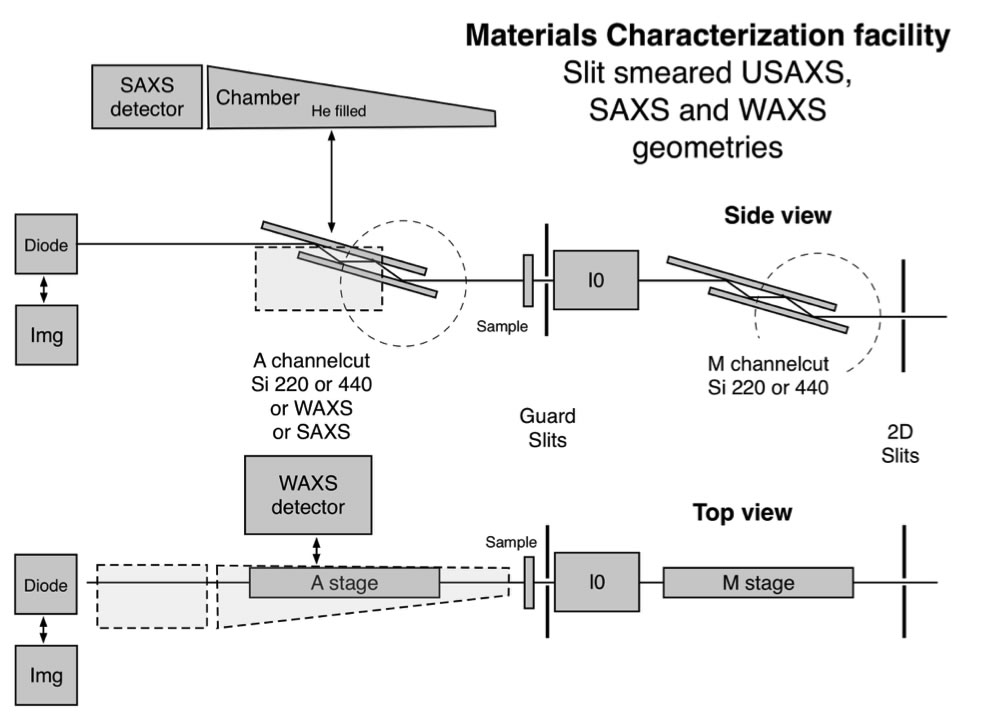
Schematics of the USAXS - SAXS - WAXS instrument with all three geometries. Data are collected sequentially using the three devices. Change over time between detectors is about 30 seconds.
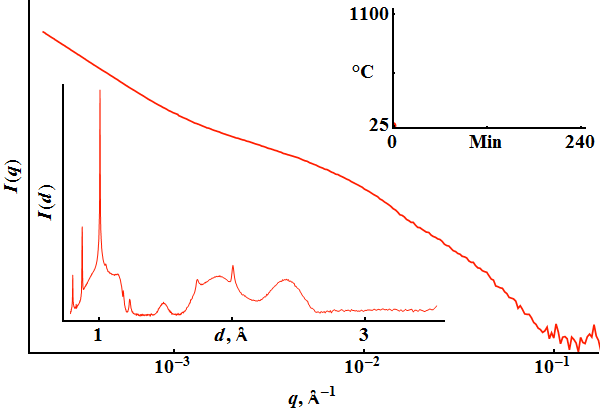
An in-situ USAXS-SAXS-WAXS study of precipitate dissolution and size evolution in a model gamma-gammaPrime ternary Ni-based alloy (collaboration with Dr. G. Muralidharan, ORNL). A 0.1 mm thick sample was heated from RT to 1100C at 4.5C/min while undergoing repeated USAXS-SAXS-WAXS (24 keV) at 5 minute intervals. Research sponsored by the U.S. Department of Energy, Assistant Secretary for Energy Efficiency and Renewable Energy, Office of Vehicle Technologies, as part of the Propulsion Materials Program.
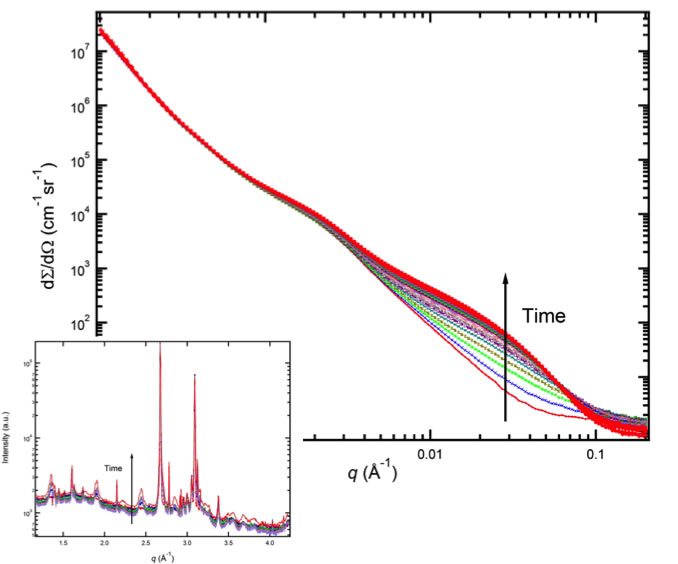
USAXS/SAXS/WAXS data : In situ data collected at 226 °C over about 16 hours represent microstructure evolution of AA2024 aluminum alloy (Allen, Levine, and Zhang, NIST). USAXS data enable quantification of second phase formation (size and volume), WAXS enables phase identification.
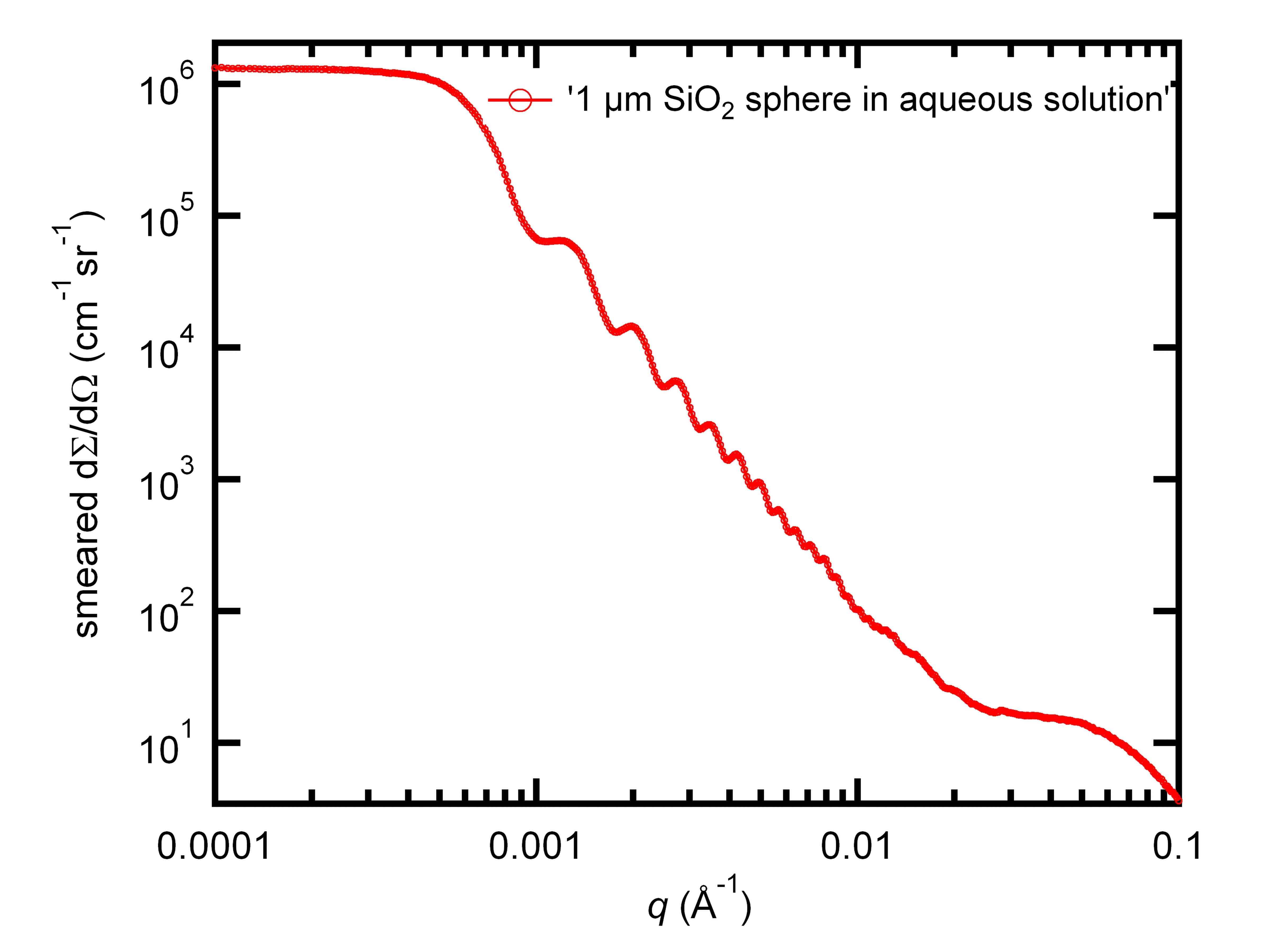
Scattering of 1 micron SiO2 spheres in aqueous solution.
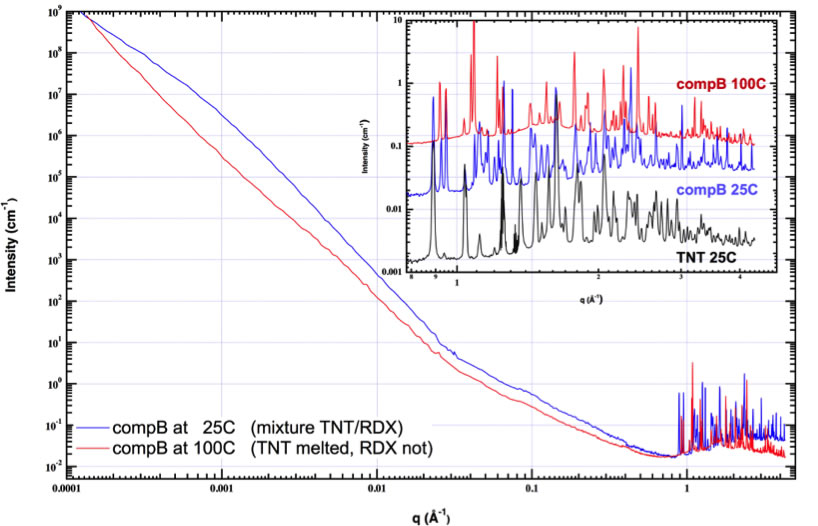
USAXS/SAXS/WAXS in situ data : Data collected by LLNL (Trevor Willey et.al.) on high-explosives. The material is composite of two high-explosives and plastic binder. The WAXS clearly shows phase changes while USAXS/pinSAXS data show microstructure change as function of heating.

Scattering of 1 micron Polystyrene spheres in solution.
